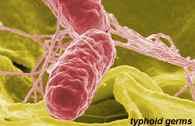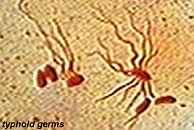فشل التجارب في إثبات أن الجراثيم تسبب المرض
ترجمة إلكترونية
في مجلة Physical Culture لمايو 1919 مقال د. جون ب. فريزر، MD، GM، بعنوان "هل الجراثيم تسبب المرض؟" وهو ما يعطي حساب بعض التجارب في هذا الصدد نفذت في تورونتو خلال الفترة بين 1911 و 1918. ويقول:
"وفي محاولة جادة لتحديد ما إذا جراثيم خطرة، اتخذت تورونتو جزءا الشرفاء. في حل هذه المسألة في السنوات الثلاث الأولى، 1911/12/13، قضيت في دراسة نقطة واحدة: متى تظهر الجراثيم؟ " كان الحكم بعد ظهور المرض؛ وأدت هذه الحقيقة إلى الافتراض أن الجراثيم كانت مجرد نتيجة ثانوية للمرض، وربما غير مؤذية.
"في عام 1914 قامت مجموعة صغيرة من المواطنين لإثبات النقطة الأخيرة من خلال اعتماد طريقة هنتر من العمل المباشر، وهي، دمج جراثيم قوية جديدة في الطعام والشراب ومن ثم استخدام تلك المواد الغذائية بالطريقة العادية. ...
"إن التجربة الأولى جعلت تتخذ خمسين ألف جراثيم الدفتيريا في الماء، وبعد أيام قليلة التشويق وأي علامة على المرض واعتبر أن الخطر قد انتهى. وكان السبب في اختيار جراثيم الدفتيريا للتجربة الأولى التي في البيش، كان لدينا علاج يمكن الاعتماد عليها خاصة بالنسبة للإجهاض المرض، وتوفير أنها أظهرت علامات النامية.
في التجربة الثانية، تم استخدام 150000 جراثيم الدفتيريا في الحليب، ومرة أخرى ظهرت أي علامات على الخناق.
في التجربة الثالثة، واستخدمت أكثر من مليون من جراثيم الدفتيريا في الغذاء دون إنتاج أي علامة على المرض. ...
"نفذت سلسلة أخرى من التجارب بجراثيم التيفوئيد، ويجري رعاية خصوصي المتخذة لتصيب الماء المقطر، الحليب الطبيعي (وليس مبستر أو معقم pasturized)؛ الخبز واللحوم والأسماك والبطاطا، الخ، الخ، مع الملايين من الجراثيم الأكثر قوية أن يمكن المحتضنة، ولكن لعلمه بأنها اتخذت، واحد من شأنه أن يعرف شيئا عن ذلك.
"قدمت سلسلة أخرى من التجارب مع جراثيم التهاب السحايا اللعين، وكما يعتقد أن الجراثيم لتطوير أساسا في الأغشية المخاطية في الأنف، أخذت آلام خاص الى مسحة الملايين من الجراثيم على الأرض وجانبي الأنف، إلى الجيوب محاري، على اللوزتين، تحت اللسان، والخلفي من الحلق. وبالإضافة إلى هذه الاختبارات تم إجراء اختبارات أخرى في الطعام والشراب الملايين من الجراثيم في كل حالة، وحتى الآن لم يظهر أي أثر للمرض.
"أجريت التجارب مع جراثيم السل في طريقة مختلفة - أعطيت المزيد من الوقت بين التجارب وذلك للسماح للجراثيم لتطوير؛ على الأدلة السريرية أظهرت أن هذا المرض قد تبقى كامنة، أو وضعت بشكل ناقص لعدة أشهر نتيجة لذلك. ذلك يعني أشهر من يراقب وينتظر قبل واحد يمكن أن يكون الإيجابي الذي الجراثيم لن تتطور.
"وهنا مرة أخرى كانت تستخدم الملايين من الجراثيم في الماء والحليب والمواد الغذائية من مختلف الأنواع، وأعطيت كل التسهيلات للجراثيم لتطوير بقدر الوقت والمروءة، والأرقام، ومجموعة متنوعة من الطعام والشراب يشعر بالقلق، وكما ما يقرب من خمسة لقد مضت سنوات منذ أن بدأت التجربة مع TB وأي دليل على المرض قد ظهر أعتقد أننا ما يبررها في الاعتقاد بأن الجراثيم غير ضارة. وبالإضافة إلى تلك التجارب تم استخدام مزيج من الجراثيم، مثل التيفود والالتهاب الرئوي والتهاب السحايا و وجاء التيفوئيد والالتهاب الرئوي والدفتيريا، الخ، الخ، ولكن لا يوجد دليل على المرض.
"وخلال السنوات أجريت 1914-15-16-17-18 على مائة وخمسين التجارب بطرق علمية وبكل الاحتياطات وبعد الاطلاق لم تظهر أي علامات على المرض."
من هـ م شيلتون - الحياة البشرية الفلسفات والقوانين 1928
http://naturalhygienesociety.org/review/0801/shelton-disease-causes.html
'''''''''''''''''''''''''''''''''''''''''''''''''''''''''''''''''''''''''''''''''''''
EXPERIMENTS
In Physical Culture for May 1919 is an article by John B. Fraser, M.D., G.M., entitled "Do Germs Cause Disease?" giving an account of some experiments in this connection carried out in Toronto during the period between 1911 and 1918. He says: "In an earnest endeavor to determine whether germs are dangerous, Toronto has taken an honorable part. In solving this question the first three years, 1911-12-13, was spent in studying a single point, viz. When does the germ appear?' The verdict was after the onset of disease; and this fact led to the supposition that germs were simply a by-product of disease, and possibly harmless.
"In an earnest endeavor to determine whether germs are dangerous, Toronto has taken an honorable part. In solving this question the first three years, 1911-12-13, was spent in studying a single point, viz. When does the germ appear?' The verdict was after the onset of disease; and this fact led to the supposition that germs were simply a by-product of disease, and possibly harmless.
"In 1914 a small group of citizens undertook to prove the latter point by adopting Hunter's method of direct action, viz., incorporating fresh vigorous germs in food and drink and then using that food in the ordinary way. ...
"The first experiment made was taking fifty thousand diphtheria germs in water, and after a few days suspense and no sign of the disease it was considered that the danger had passed. The reason for choosing diphtheria germs for the first experiment was that in aconite, we had an especially reliable remedy for aborting the disease, providing it showed signs of developing.
In the second experiment, one hundred and fifty thousand diphtheria germs were used in milk, and again no signs of diphtheria appeared.
In the third experiment, over one million diphtheria germs were used in food without producing any sign of the disease. ...
"Another series of experiments were carried out with typhoid germs, especial care being taken to infect distilled water, natural milk (not pasturized); bread, meat, fish, potatoes, etc., etc., with millions of the most vigorous germs that could be incubated, and but for the knowledge that they had been taken, one would have known nothing about it.
"Another series of tests were made with the dreaded meningitis germs, and as the germs are believed to develop mainly in the mucous membranes of the nostrils, especial pains were taken to swab millions of the germs over the floor and sides of the nostrils, into the turbinated sinuses, over the tonsils, under the tongue, and back of the throat. In addition to these tests other tests were made in food and drink—millions of germs in each case, and yet no trace of the disease appeared.  "The experiments with the tuberculosis germs were carried out in a different way - more time was given between the experiments so as to allow the germs to develop; for clinical evidence has shown that this disease may remain latent, or imperfectly developed for months. Consequently it meant months of watching and waiting before one could be positive that the germs would not develop.
"The experiments with the tuberculosis germs were carried out in a different way - more time was given between the experiments so as to allow the germs to develop; for clinical evidence has shown that this disease may remain latent, or imperfectly developed for months. Consequently it meant months of watching and waiting before one could be positive that the germs would not develop.
"Here again millions of germs were used in water, milk, and food of various kinds; every facility was given for the germs to develop as far as time and virility, numbers, and variety of food and drink was concerned; and as almost five years have elapsed since the experiment with T. B. began and no evidence of the disease has appeared I think we are justified in the belief that the germs are harmless. In addition to those experiments combinations of germs were used, such as typhoid and pneumonia, meningitis and typhoid, pneumonia and diphtheria, etc., etc., but no evidence of disease followed.
"During the years 1914-15-16-17-18 over one hundred and fifty experiments were carried out carefuly and scientifically and yet absolutely no signs of disease followed."
from H.M. Shelton - Human Life Its Philosophies and Laws, 1928
http://naturalhygienesociety.org/review/0801/shelton-disease-causes.html
-----------------------------------------------------------------------
Français, traduction électronique
EXPÉRIENCES
Dans la culture physique pour mai 1919 est un article de John B. Fraser, MD, GM, intitulé "les germes causent la maladie?" rendre compte de certaines expériences à cet égard effectué à Toronto pendant la période entre 1911 et 1918. Il dit:
"Dans un effort sérieux pour déterminer si les germes sont dangereux, Toronto a pris une part honorable. Pour résoudre cette question, les trois premières années, 13/12/1911, a été consacrée à l'étude d'un seul point, à savoir. Quand le germe apparaît-il? ' Le verdict était après l'apparition de la maladie, et ce fait a conduit à la supposition que les germes étaient tout simplement un sous-produit de la maladie, et peut-être inoffensif.
"En 1914, un petit groupe de citoyens a entrepris de prouver ce dernier point en adoptant la méthode de Hunter de l'action directe, à savoir., Incorporant germes vigoureux frais dans les aliments et les boissons, puis en utilisant que la nourriture de la façon habituelle. ...
"La première expérience faite prenait cinquante mille germes de la diphtérie dans l'eau, et après un suspense de quelques jours et aucun signe de la maladie, il a été considéré que le danger était passé. La raison du choix germes de la diphtérie pour la première expérience a été que, dans l'aconit, nous avons eu un recours particulièrement fiable pour avorter la maladie, à condition qu'elle montrait des signes de développement.
Dans la deuxième expérience, 150 000 germes de la diphtérie ont été utilisés dans le lait, et encore aucun signe de la diphtérie sont apparus.
Dans la troisième expérience, plus d'un million de germes de diphtérie ont été utilisés dans les aliments sans produire aucun signe de la maladie. ...
"Une autre série d'expériences ont été réalisées avec les germes de typhoïde, un soin particulier est pris pour infecter l'eau distillée, lait naturel (non pasteurizé), le pain, la viande, le poisson, les pommes de terre, etc., etc., avec des millions de germes les plus vigoureux que pourrait être incubés, et sans la connaissance qu'ils avaient été prises, on aurait rien su.
"Une autre série de tests a été réalisée avec les germes de la méningite redoutés, et que les germes sont censés développer principalement dans les muqueuses des narines, des douleurs especial ont été prises pour tamponner des millions de germes sur le sol et les côtés des narines, dans les sinus cornets, au cours des amygdales, sous la langue, et l'arrière de la gorge. En plus de ces tests autres tests ont été effectués dans les aliments et boissons-millions de germes dans chaque cas, et pourtant aucune trace de la maladie est apparue.
"Les expériences avec les germes de la tuberculose ont été réalisées d'une manière différente - plus de temps donné entre les expériences de manière à permettre aux germes de développer, par des signes cliniques a montré que cette maladie peut rester latente, ou imparfaitement développé pendant des mois conséquence. cela signifiait mois d'observation et d'attente avant de pouvoir être positif que les germes ne se développeraient pas.
"Là encore des millions de germes ont été utilisés dans l'eau, le lait, et de la nourriture de toutes sortes; chaque établissement a été donnée pour les germes de développer autant que le temps et la virilité, le nombre et la variété de la nourriture et des boissons était préoccupé, et que près de cinq années se sont écoulées depuis l'expérience avec la tuberculose a commencé et aucun signe de la maladie est apparue Je pense que nous sommes justifiés dans la croyance que les germes sont inoffensifs. En plus de ces expériences combinaisons de germes ont été utilisés, comme la typhoïde et la pneumonie, la méningite et typhoïde, la pneumonie et la diphtérie, etc., etc., mais aucun signe de maladie suivies.
«Pendant les années 1914-15-16-17-18 plus cent cinquante expériences ont été réalisées avec soin, et scientifiquement et pourtant absolument aucun signe de maladie suivies."
de H.M. Shelton - sa durée de vie humaines philosophies et des lois, 1928
